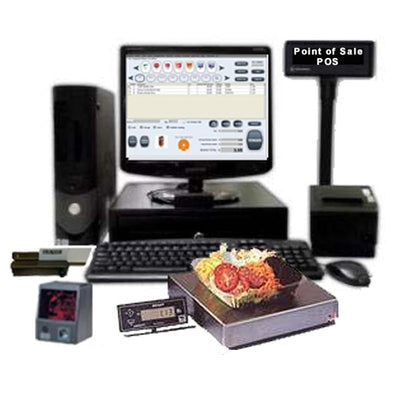The world of retail and service is changing and so are the tools used to power these. The current POS system is at the core of this evolution. It’s an amalgamation of sytems and equipment that extend beyond cash registers, receipts and other fundamental features. This is no longer just about collecting payment. The experience at the point of sale nowadays is about operational intelligence as well as customer insight. It is also about seamless integration of all aspects of your company.
The Heart of the System: How POS Software Goes Beyond Transactions
While traditional systems can handle transactions of a basic nature but point of sale POS software is an operational center. It is able to update stock on a regular basis and provides alerts when items are in short supply. It records sales history and preferences. Every transaction is converted into useful data that can be used in future purchasing decisions and marketing.
One of the most under-appreciated characteristics of a great POS system is its capability to link dots among different departments. Instead of managing payroll separately For instance, some systems incorporate time clocks which directly informs employee schedules and wage calculations. This leads to a more efficient workflow that requires less administrative issues.

POS software today comes with syncing features that are essential for companies that have a physical presence and an online one. The products listed in store can be synchronized with online listings at any time. This can prevent double-selling as well as inventory inconsistencies. This method of unified operation is vital because shopping trends are moving towards hybrid purchases where customers can browse online before picking up the item in-store.
Why integration is more essential than ever
Modern POS platforms are a wonderful example of integration. There is no need to trying to manage multiple tools that can’t “talk” to one another. A robust POS platform can be defined by its capability to link sales, inventory management, staff management, and accounting.
Think about the experience customers have. A quick scan at the point of purchase can display a customer’s loyalty points, and also apply discounts. They will also be able to send them an electronic receipt. On the backend, the sale is used to update the revenue totals inventory availability, as well as daily reports. This creates a more personalized shopping experience while minimizing the need for manual input and a chance of making mistakes.
Business owners and managers find this level of information invaluable. They are able to adjust their pricing strategies, and react to market trends quicker with accurate real-time data.
An Investment that Pays Off in the long run
There’s a reason more business owners invest in POS solutions they deliver measurable results. They’re not just quicker and more accurate, they also support better decision-making to help you grow your business over the long term. A properly-implemented Point of Sales system will help you streamline your processes and spot patterns you would have otherwise missed.
In addition, due to the increase in expectations from consumers that a modern point of sale setup becomes an important but silent part of customer experience. Today, customers demand speedy checkouts, accurate updates to stock and flexibility with online payments. Businesses that can meet these pillars earn trust and repeat visits.
Final Thoughts
Modern POS system is more than just a cash-out tool. It’s a bridge that connects your products, staff as well as your client. The right point of sale POS software helps you understand your business on a deeper level, offering clarity in decision-making and efficiency in execution.
In a competitive market staying ahead requires being informed, agile and focusing on customer satisfaction. With a smart integrated POS point of sale system in your corner it’s not just about making sales but also creating a sustainable business.